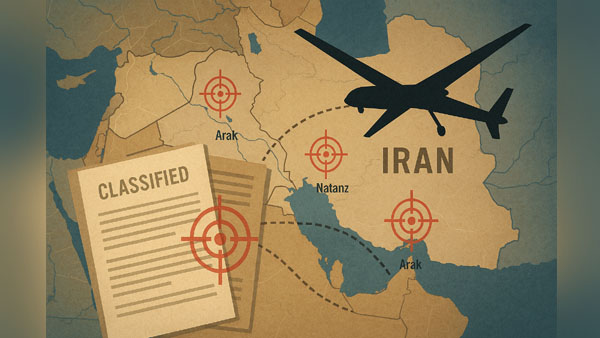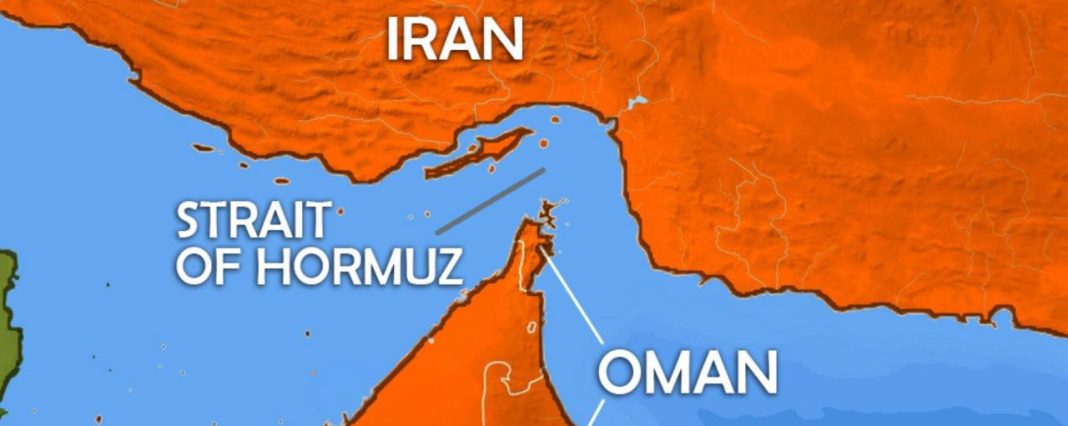By Dipak Kurmi
The Middle East erupted into open warfare when Israel launched a massive aerial and drone offensive against Iran, an operation described as a “necessary preemptive action” to counter an imminent nuclear threat. Over 100 precision strikes targeted Iran’s deeply embedded nuclear facilities, Islamic Revolutionary Guard Corps (IRGC) bases, missile depots, and covert intelligence posts, delivering a crippling blow to Tehran’s strategic infrastructure. The assault, one of the most complex and far-reaching military operations in Israel’s history, resulted in at least 224 Iranian deaths, including senior IRGC commanders such as General Hossein Salami, Major General Mohammad Bagheri, and General Amir Ali Hajizadeh, alongside six top nuclear scientists. The devastation marked the culmination of years of clandestine intelligence work, with a daring 2018 Mossad operation—the nuclear archive heist in Tehran—serving as the catalyst that exposed Iran’s nuclear ambitions and set the stage for this explosive conflict. As missiles continue to fly and global powers scramble for a resolution, the war, now in its seventh day, threatens to engulf the region in unprecedented upheaval, rooted in a decades-long shadow war that has finally burst into the open.
The origins of the 2025 conflict trace back to a cold January night in 2018, when Mossad agents executed a Hollywood-esque raid on a nondescript warehouse in Shorabad, on Tehran’s outskirts. This unassuming building concealed a highly classified nuclear archive, hidden by Iran despite its commitments under the 2015 Joint Comprehensive Plan of Action (JCPOA). Months of meticulous surveillance had pinpointed a six-and-a-half-hour window between security shifts, allowing the agents to infiltrate undetected. Inside, they encountered dozens of safes containing documents, diagrams, and CDs detailing Iran’s nuclear weapons program. Using specialized equipment, they breached 32 safes, extracting 50,000 pages and 163 CDs—approximately 500 kilograms of material—linked to “Project Amad,” a covert initiative to develop nuclear warheads and adapt them for Shahab-3 missiles. The files included blueprints for warhead miniaturization and references to uranium deuteride, a rare nuclear initiator material. By dawn, the agents and their haul had vanished across the border, leaving Iranian security reeling. A senior Israeli official likened the operation to “Ocean’s Eleven,” but its stakes were far higher, reshaping Middle East geopolitics.
Three months later, Israeli Prime Minister Benjamin Netanyahu unveiled the archive’s contents in a dramatic televised address, standing before rows of binders and discs. He accused Iran of deceiving the international community, asserting that the documents proved Tehran had never abandoned its nuclear weapons ambitions. The archive revealed detailed site maps, scientist names, testing protocols, and evidence of a hidden chamber at the Parchin military base, suspected of hosting high-explosive tests for nuclear triggers. Most alarmingly, it showed that Iran had preserved nuclear knowledge post-JCPOA, maintaining a “nuclear insurance policy” for future weaponization. Shared with then-U.S. President Donald Trump, the revelations prompted the U.S. withdrawal from the JCPOA, citing Iran’s bad faith. Western intelligence agencies verified the documents’ authenticity, amplifying global concerns about Iran’s dual-track approach: public compliance with inspections while secretly safeguarding nuclear expertise.
Iran vehemently denied the allegations, dismissing the archive as fabricated, but the specificity of the evidence—blueprints, internal communications, and technical drawings—undermined its claims. The exposure triggered a cascade of retaliatory actions, including a series of high-profile assassinations of Iranian nuclear scientists, widely attributed to Mossad. The most prominent was Mohsen Fakhrizadeh, the alleged architect of Iran’s nuclear program, killed in a 2020 ambush using remote-controlled gunfire. Others, like Masoud Ali Mohammadi, fell victim to explosives near their homes or vehicles. Iran responded with cyberattacks on Israeli infrastructure and attempted strikes on Israeli diplomats via proxy networks, escalating the shadow war. By mid-2025, Western intelligence detected accelerated Iranian nuclear activity, including uranium enrichment beyond JCPOA limits and renewed development of delivery systems. Israeli intelligence assessed Iran was “weeks, not months” from acquiring enough fissile material for a nuclear bomb, prompting the decisive June 13 offensive.
Israel’s operation, dubbed “Operation Rising Lion,” unleashed a barrage of precision-guided missiles and drones on Iran’s nuclear and military infrastructure. Key targets included the Natanz uranium enrichment facility in Isfahan, the Arak heavy water reactor, and an underground missile storage site near Kermanshah. Satellite imagery confirmed the destruction of research centers, military airfields, and IRGC command structures, with over 120 surface-to-surface missile launchers obliterated. The operation’s sophistication reflected years of preparation, with Mossad reportedly positioning explosive drones and precision weapons inside Iran to neutralize air defenses and missile launchers. The strikes also targeted Tehran, Tabriz, and Mashhad, hitting nuclear research hubs and IRGC’s Quds Force facilities. The human toll was staggering: Iran reported 80 initial deaths, including 20 children, with over 480 injured by June 14. Among the casualties were IRGC intelligence chief and his deputy, further decapitating Iran’s military leadership.
Iran retaliated swiftly, launching over 100 ballistic missiles and drones at Israeli cities, including Tel Aviv, Haifa, and Beersheba. Despite Israel’s Iron Dome and David’s Sling systems intercepting most projectiles, several missiles penetrated, killing at least 24 civilians and damaging infrastructure, including Soroka Medical Center in Beersheba, hit by a cluster munition on June 19. Iran’s Revolutionary Guards claimed the attacks targeted Israeli military and intelligence headquarters, employing advanced tactics that caused Israel’s defense systems to misfire. The conflict’s seventh day saw continued escalation, with Israel striking Iran’s state broadcaster and two-thirds of its ballistic missile launchers, while Iran launched waves of Emad, Ghadr, and Kheybar Shekan missiles. Iranian proxies, including Hezbollah in Lebanon and the Houthis in Yemen, joined the fray, firing rockets into northern Israel and targeting Israeli naval assets in the Red Sea.
The 2018 archive heist was the spark that ignited this powder keg. By exposing “Project Amad” and Iran’s nuclear deception, it provided Israel with both intelligence and justification for its aggressive posture. The documents emboldened Israeli leaders, convincing them that diplomacy was insufficient against an Iran preserving nuclear know-how. For Tehran, the heist was a profound humiliation, crossing a red line that fueled its determination to advance its nuclear program and retaliate through proxies and cyberattacks. The ensuing tit-for-tat—assassinations, covert operations, and proxy battles—built inexorably toward the 2025 war. The archive’s revelation of warhead miniaturization and nuclear payload plans for Shahab-3 missiles underscored the existential threat Israel perceived, driving its preemptive strategy.
The humanitarian and geopolitical fallout is dire. Thousands have fled border regions in both countries, with electricity and internet blackouts plaguing Iran. Israel has declared a state of emergency, while cyberattacks have disrupted Iran’s banking system, fueling public anxiety. Supreme Leader Ayatollah Ali Khamenei appointed Brigadier General Mohammad Karami as IRGC-Ground Forces commander on June 19, signaling a tightening of internal control. Global leaders, including U.S. President Donald Trump, have called for restraint, with Trump indicating a decision on U.S. involvement within two weeks. The United Nations Security Council’s emergency session has yielded no consensus, with China and Russia backing Iran’s self-defense claims and Western nations supporting Israel’s security concerns. The International Atomic Energy Agency confirmed no radiological effects from the strikes but noted extensive damage to Natanz and Isfahan facilities.
The war’s roots lie in the 2018 heist, which exposed Iran’s nuclear ambitions and set a collision course. Israel’s June 2025 offensive, informed by years of intelligence, aimed to dismantle Iran’s nuclear and missile capabilities, but it has unleashed a broader conflict with no end in sight. As Israeli jets continue deep-penetration raids and Iran mobilizes its proxies, the region teeters on the brink of a wider war. The world watches anxiously, hoping diplomacy can contain the crisis before it spirals further, but the legacy of that daring Mossad operation continues to shape a volatile and perilous present.
(the writer can be reached at dipakkurmiglpltd@gmail.com)




